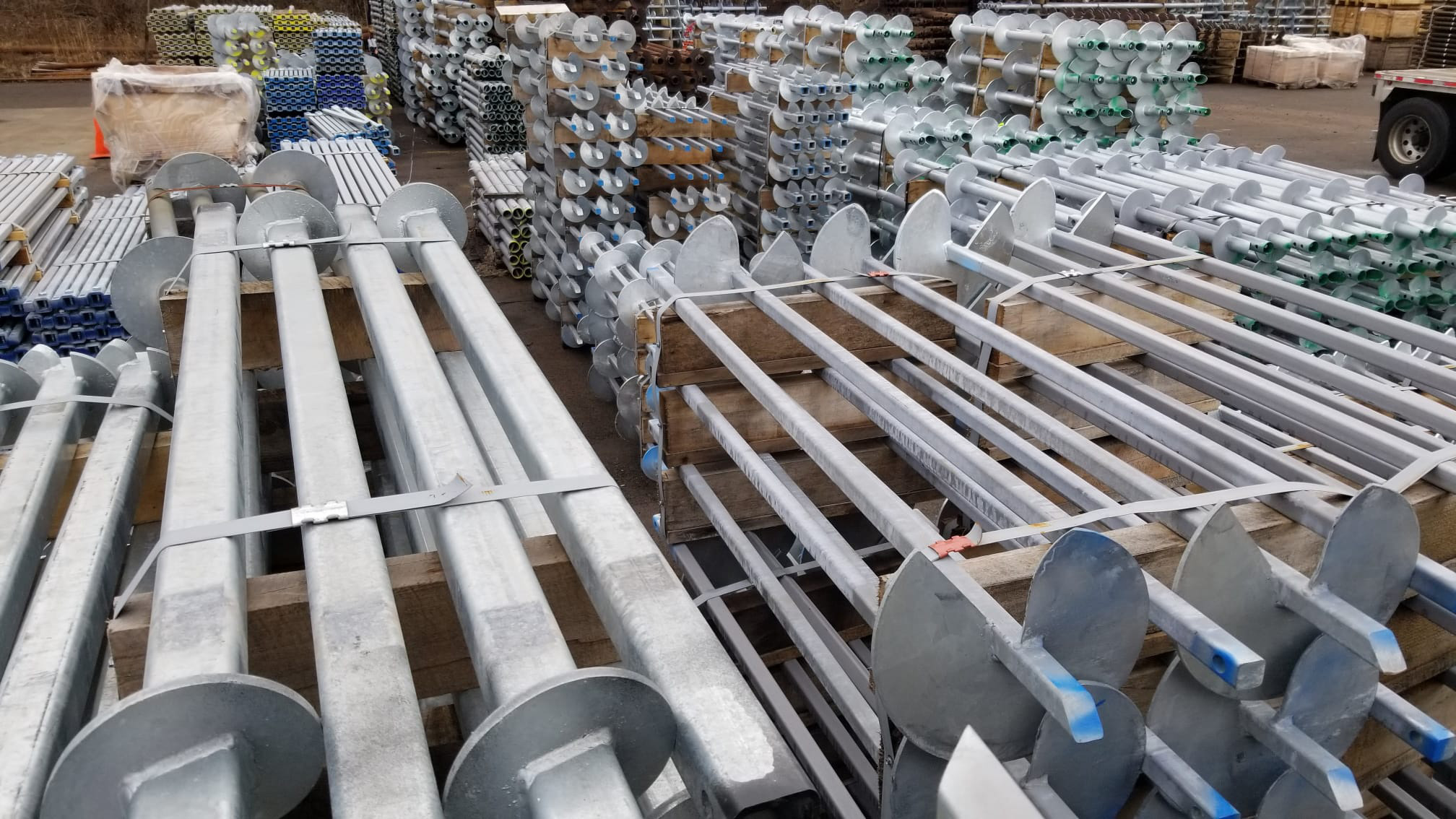Search for topics or resources
Enter your search below and hit enter or click the search icon.

Helical piles have been around since the 1800s. Though, unless you have been a part of a project that had specific challenges, you may never have worked with them.
While the advantages of using helical piles are typically recognized on sites that have challenges relating to limited access and mobility, helical piles outperform traditional deep foundations in other scenarios as well.
Helical piles are an efficient way to stabilize an existing foundation, provide additional support for buildings that are being retrofitted with additional floors, or to lay the groundwork for a new construction project.
Over the last 200 years, advancing technology and further studies have proven helical piles to be an suitable option for both tension and compression load applications. They’re less invasive, more environmentally friendly and a cheaper alternative to traditional deep foundation methods. In some cases, helical piles can be installed for 50% less than comparable deep foundation methods.
Their versatility and ease of installation has established a place for helical piles in the future of building.
Also known as screw piles or anchors, helical piles have become more common in the 21st century as further advantages are discovered. We believe helical piles deserve a place in every modern deep foundation toolbox as they are:
Easily removed and reused, helical piles are an environmentally friendly foundation solution for temporary structures.
Furthermore, once a pile is removed there is no manmade materials left behind, so soils are not permanently polluted.
A helical unit is designed so that the helices that advance a pile follow the same path through the soil. This minimizes soil disturbance which is especially important on historic sites and in delicate ecosystems.
There is also no spoils produced or soil removed during the installation of a helical pile. On sites where contamination may exist below the surface, this will help to prevent costly cleanup cleanup procedures or the contamination spreading to other areas.
Compared to other deep foundation systems, helical pile installation equipment is highly mobile and compact.
This allows helical piles to be installed with low impact on surrounding nature as large areas do not have to be deforested for installation to take place.
The benefit when installing in urban areas is that helical piles can be used in delicate historical projects and densely populated metro areas, while keeping disruptions to an absolute minimum.
Plus, of course, helical piles can be installed in most weather. Meaning your project can remain on schedule regardless of the season.
Monitoring has proven that no vibrations are created during the installation of a helical pile and there is less noise pollution when compared to alternate foundation installation methods.
A hydraulic powered drive motor, usually mounted to an excavator or other equipment with hydraulic capabilities, rotates the pile shaft while the helices on the shaft pull the pile into the soil.
Screwing piles into the ground is more efficient and less disruptive than pounding or vibrating piles. This makes helical piles the ideal deep foundation when installing near or inside other structures, especially when an existing structure can be compromised or nearby neighborhoods can be disrupted.
Helical piles require few pieces of equipment to be installed, making installation more efficient in hard-to-reach locations or on sites with limited space.
As there are fewer pieces of equipment needed, install crews can be leaner and mobilization costs are reduced.
The variety of equipment that can be used to install helical piles make them extremely versatile. The machinery needed to install helical piles is already present on most sites, with the only piece of speciality equipment being a hydraulic drive motor attachment. These drive motors are still easily accessible and can be purchased or rented.
The ease of installation, availability of equipment and low barriers to entry make it easy for many contractors to become certified helical pile installers.
Helical piles are generally constructed from steel and are durable and dependable. Our products are manufactured in the USA, and we offer both round and square shaft helical piles and anchors.
All of our standard Helical Piles, Helical Anchors, and associated Brackets and Hardware are ICC-ES Certified under ESR-3750-IDEAL Manufacturing, Inc. This includes 1.50” RCS (solid square shaft), 2.875” x .203” W.T., 2.875” x .276” W.T., 3.500” x .216” W.T., 3.500” x .300” W.T.
Numerous coatings can be applied to increase durability and extend the lifetime of a helical pile. Hot dip galvanizing is the most common and is often used where there are corrosive soils or a high-water table.
The design life of a helical pile can vary depending on factors at the installation location, but it’s common for a helical unit to have a design life of 75 years or more.
Regular inspections and maintenance can also help to extend the life of a helical pile.
Want to know how our highly efficient production processes and principles, combined with our commitment to consistent quality, allow us to provide superior products with some of the shortest lead times in the industry?
Topics: